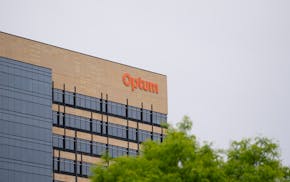General Mills Inc. is still riding the pandemic's tailwinds despite Wall Street's concern over inflation and higher supply chain costs.
The company brought in $4.5 billion in revenue this summer — more than it did during summer 2020 — surprising investors. Its biggest gains last quarter, announced Wednesday, were in pet food, and convenience stores and food service as people got out of their houses to travel and dine following widespread vaccination against COVID-19.
Golden Valley-based General Mills reported adjusted diluted earnings of 99 cents, beating analysts' expectation by 10 cents for the first quarter of its fiscal 2022. The company's stock rose more than 3% in trading Wednesday on the surprise.
The Cheerio maker's profit though declined 2% to $627 million for the quarter ended Aug. 31, with ongoing shortages of truck drivers in the U.S. and shipping containers in global transportation keeping costs high for manufacturers, including in food.
"We foresee labor challenges persisting for quite a while, especially as you look at logistics," Jeff Harmening, chief executive of General Mills, said. "And while we have seen a little bit of loosening on the labor markets once the government spending has decreased, that's not going to solve the whole dilemma."
Organic net sales — industry parlance for growth achieved without the help of recently acquired businesses — rose 2%, a notable uptick within the slow-growth packaged food industry.
The maker of Lucky Charms, Totino's and Yoplait posted a sales decline of 3% in its largest segment, North America retail, against last year's tough comparable period when many consumers were more consistently staying at home.
But when put relative to pre-pandemic levels, North America retail sales were up 5% in the quarter, on a two-year compound growth basis.
Inflation is expected to elevate input costs for the company's fiscal year by as much as 8% due to a combination of extreme weather events, supply-demand imbalances and tight transportation and labor markets.
The company recently raised prices on some of its goods sold to its retail and wholesale customers, which are in part being passed on to consumers.
"Ideally you don't like to go back to retailers multiple times or consumers multiple times with price increases, but we clearly aren't in an ideal market," Harmening said. "It's never easy but I think there is an understanding [by retailers]."
Arun Sundaram, equity analyst at CFRA Research, said in a note Wednesday his firm expects that General Mills' cost savings and raising of prices should fully offset inflation pressure.
"We also note [General Mills] is prepared to take additional pricing actions if cost inflation intensifies," Sundaram wrote.
Sales in the company's pet segment were up 25% following the acquisition of Tyson Foods' line of dog treat brands, including Nudges, True Chews and Top Chews, and a new cat food under its Blue Buffalo brand. Organic sales were up 20%, reflecting higher rates of pet ownership and pampering.
The convenience and food-service rebound is largely due to a return of General Mills' K-12 education business that came to a near halt in the first six months of the pandemic. That business grew 23% in the quarter.
The company reaffirmed its full-year fiscal guidance, estimating it will likely now reach the high end of the range.

DOGE cuts federal money for upgrades at Velveeta plant in New Ulm

Minnesota factories strained by new steel tariffs and ensuing chaos
'We don't want to lose this mine': Fear sets in for Iron Range miners as shutdown takes hold

UnitedHealth sues the Guardian, alleging defamation in coverage of nursing home care
